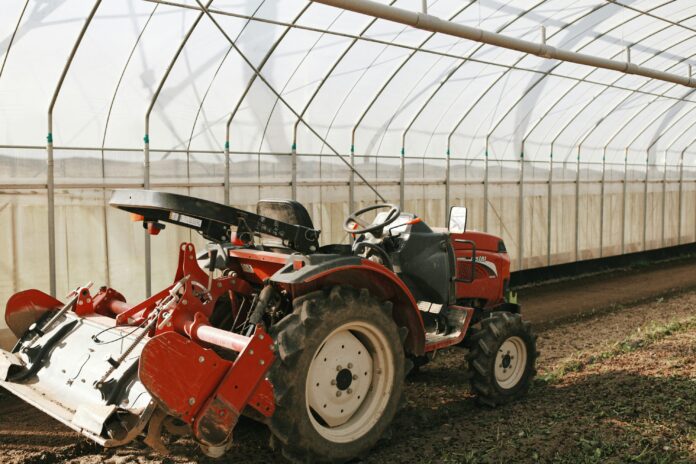The world is altering, and so is the way in which we take into consideration meals. As populations focus in city facilities, the necessity for sustainable and resilient meals methods turns into more and more vital. One promising answer gaining traction globally is City Farming Initiatives. These initiatives are reshaping how we produce and eat meals, bringing agriculture nearer to our plates and fostering extra sustainable communities. The worldwide marketplace for these initiatives is experiencing vital development, pushed by a confluence of things together with growing consciousness of meals safety, environmental considerations, and technological developments.
Key Takeaways:
- City Farming Initiatives are experiencing vital world market development, pushed by components like meals safety considerations and technological developments.
- These initiatives embody a variety of agricultural practices, from group gardens to vertical farms, every providing distinctive advantages for city environments.
- Technological improvements are taking part in a vital position in optimizing City Farming Initiatives, making them extra environment friendly and scalable.
Understanding the Surge in City Farming Initiatives
The rise in reputation of City Farming Initiatives might be attributed to a number of key components. At the beginning, there’s a rising consciousness of the vulnerabilities inherent in our present meals methods. Lengthy provide chains are vulnerable to disruptions attributable to local weather change, geopolitical instability, and financial shocks. City Farming Initiatives provide a buffer in opposition to these disruptions by offering an area supply of recent, wholesome meals.
Moreover, considerations concerning the environmental impression of standard agriculture are fueling the demand for extra sustainable options. Conventional farming practices typically contain the overuse of pesticides, fertilizers, and water, resulting in soil degradation, water air pollution, and greenhouse fuel emissions. City Farming Initiatives, then again, might be designed to reduce their environmental footprint by means of the usage of natural strategies, water conservation methods, and renewable vitality sources.
The potential for social and financial advantages can be driving the adoption of City Farming Initiatives. These initiatives can create jobs, enhance entry to recent meals in underserved communities, and foster a way of group engagement. Group gardens, for instance, present alternatives for residents to develop their very own meals, study new expertise, and join with their neighbors.
Numerous Types of City Farming Initiatives
City Farming Initiatives embody a wide selection of agricultural practices, every with its personal distinctive traits and advantages. Group gardens, typically situated on vacant tons or rooftops, are a preferred type of city agriculture. These gardens present alternatives for residents to develop their very own meals, share sources, and construct group connections.
Rooftop farms are one other rising development, using the underutilized area on prime of buildings to develop fruits, greens, and herbs. Rooftop farms may also help cut back the city warmth island impact, enhance air high quality, and supply insulation for buildings.
Vertical farms, a extra technologically superior method, contain rising crops in vertically stacked layers, typically indoors. Vertical farms might be extremely environment friendly, utilizing managed environments to optimize rising circumstances and reduce water and vitality consumption. Hydroponics and aquaponics, soilless rising methods, are sometimes employed in vertical farms. These methods can considerably cut back water utilization and get rid of the necessity for pesticides.
Integrating City Farming Initiatives into current infrastructure, akin to inexperienced roofs and partitions, not solely enhances the aesthetic attraction of city areas but additionally contributes to improved air high quality and diminished stormwater runoff. These initiatives can remodel concrete jungles into vibrant, inexperienced areas that present a number of advantages for residents and the setting.
The Position of Know-how in City Farming Initiatives
Know-how is taking part in a transformative position in optimizing and scaling City Farming Initiatives. Precision agriculture methods, akin to sensor-based monitoring and automatic irrigation, are enabling city farmers to optimize rising circumstances and reduce useful resource consumption. Knowledge analytics can be utilized to trace crop yields, establish potential issues, and make knowledgeable choices about planting, watering, and fertilization.
Automation can be streamlining most of the duties related to city farming, from seeding and transplanting to harvesting and packaging. Robots and drones can be utilized to automate repetitive duties, releasing up human labor for extra expert actions.
Moreover, developments in LED lighting are making it potential to develop crops indoors year-round, no matter exterior climate circumstances. LED lights might be custom-made to offer the optimum spectrum of sunshine for plant development, maximizing yields and minimizing vitality consumption.
The combination of expertise into City Farming Initiatives is making them extra environment friendly, productive, and sustainable, paving the way in which for wider adoption and higher impression. This helps us to scale up these efforts throughout communities.
The Future Outlook of City Farming Initiatives
The way forward for City Farming Initiatives seems to be promising. As city populations proceed to develop and considerations about meals safety and sustainability intensify, the demand for native, resilient meals methods will solely improve. Technological developments will proceed to drive innovation in city agriculture, making it extra environment friendly, scalable, and accessible.
Coverage help from governments in any respect ranges can be essential for the success of City Farming Initiatives. Insurance policies that promote city agriculture, akin to zoning rules that enable for city farms, tax incentives for city farmers, and funding for analysis and growth, may also help to create a extra supportive setting for these initiatives.
Moreover, growing shopper consciousness of the advantages of City Farming Initiatives may also help to drive demand for domestically grown meals. By supporting native farmers and companies, shoppers may also help to create a extra sustainable and resilient meals system.
As City Farming Initiatives proceed to evolve and develop, they’ve the potential to play a major position in shaping the way forward for meals and creating extra sustainable and livable cities for all. This alteration advantages us all, bringing recent produce nearer to dwelling.


